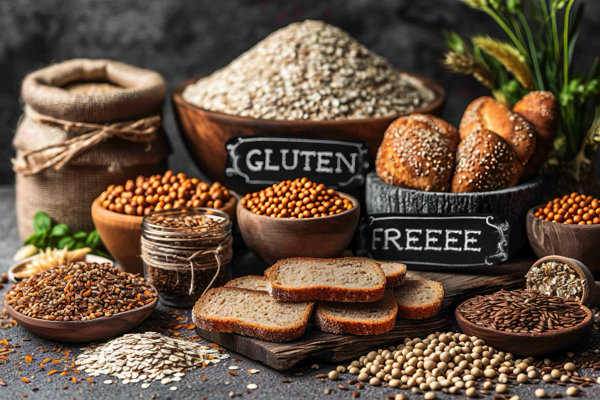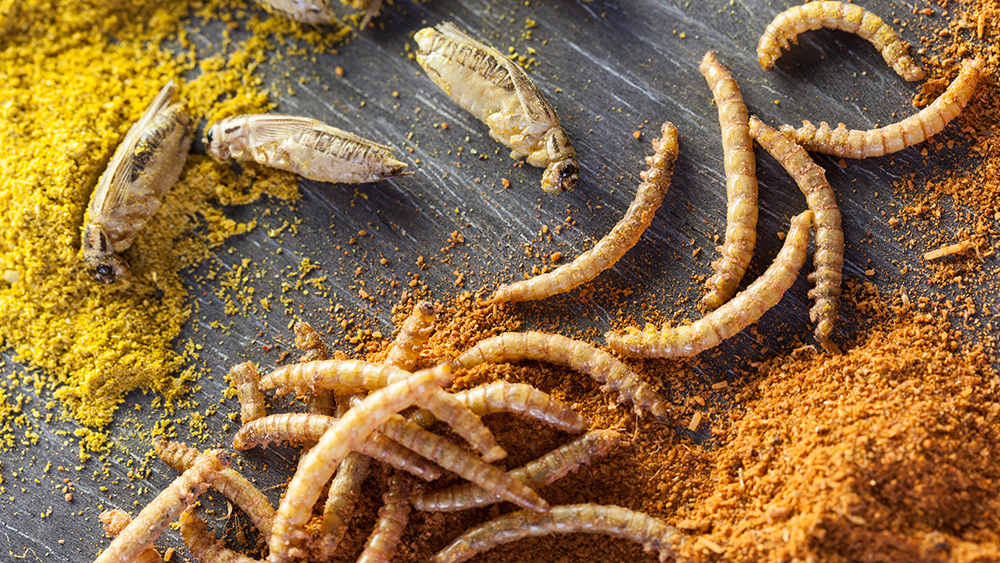Food safety alert: Many gluten-free foods are contaminated with glyphosate and other agrochemicals, tests reveal
09/03/2024 / By Olivia Cook

Recent tests on both organic and non-organic gluten-free food samples have produced disturbing results that could affect at least 20 million people who eat gluten-free food in the United States.
Moms Across America tested 46 samples of gluten-free foods (including bread, pasta, crackers, snacks, flour, dessert mixes and chips) for glyphosate/AMPA, 236 pesticides, minerals and gluten.
Approximately 600 million people worldwide avoid gluten, with many experiencing sensitivities and some having celiac disease, a condition that affects roughly one percent of the population. Celiac disease is an autoimmune system disorder that occurs when gluten – a protein found in barley, rye and wheat – is ingested. This condition can cause damage to the small intestine’s lining, leading to various health issues and preventing the absorption of certain nutrients. The only effective way to manage celiac disease is by adhering to a gluten-free diet.
Many people believe that gluten-free products are automatically healthier or safer, but these can actually be among the most misleadingly marketed and chemically contaminated foods on store shelves, according to the Health Ranger Mike Adams, author of “Food Forensics: The hidden toxins lurking in your food and how you can avoid them for lifelong health.” (Related: Health Ranger Mike Adams warns of shocking levels of GLYPHOSATE weed killer in some organic foods.)
Zen Honeycutt, director of Moms Across America, noted that the organization comprises a large, committed network of mothers dealing with health challenges, both mental and physical, in their families.
The belief that foods labeled as “clean“ are truly free of contaminants, including organic options, is increasingly being called into question. Honeycutt pointed out that many people who have been eating gluten-free and mostly organic foods for years are suffering from health issues like anxiety and digestive problems.
Testing results and food quality concerns
The tests, conducted by the Health Research Institute Laboratories found glyphosate residues in 44 out of 46 gluten-free food samples. Glyphosate, the primary chemical in Roundup herbicides, was the most frequently detected among nearly 240 pesticides screened. This weed killer was detected in nearly 96 percent of the samples at levels above 0.1 parts per billion, and 21 percent of the samples had levels higher than 10 ppb, which is the European Union’s safety threshold for pesticide residues.
Research suggests that even very low levels of glyphosate can affect gut health, disrupt hormones and have long-term health effects. (Related: Glyphosate warnings go mainstream as the dangerous truth about this toxic herbicide can no longer be denied.)
The only two products without any detectable glyphosate were Lesser Evil Popcorn and Edward and Sons Rice Crackers. (Related: Glyphosate herbicide may be altering children’s genetics and causing BIRTH DEFECTS.)
In addition to glyphosate, all tested samples had pesticide residues – including piperonyl butoxide (PBO), a chemical flagged by the U.S. Environmental Protection Agency (EPA) as a “possible human carcinogen.“ Seven samples had only trace amounts, but 25 samples (54 percent) had measurable levels of another pesticide, 2,4-D.
More troubling, the tests also showed that several products contained gluten levels above the Food and Drug Administration’s (FDA) maximum limit of 20 parts per million (ppm). The Gluten-Free Certification Organization (GFCO) has an even stricter threshold of 10 ppm. In the analysis by Moms Across America, three samples had gluten levels that exceeded 20 ppm.
Further tests revealed that almost all samples had very low levels of essential nutrients, like calcium, iron and magnesium, which is very concerning.
Honeycutt emphasized that when people buy gluten-free food, they are really paying for nutritional value, including necessary minerals. Yet many convenient and inexpensive foods, such as those served in schools and fast food, lack proper nutrition. She made it clear that while Moms Across America acknowledges that gluten-free manufacturers aim to produce safer and healthier foods, the challenge lies in the contaminated ingredients available due to the use of harmful agrochemicals. (Related: Glyphosate worse than we could imagine. “It’s everywhere.”)
Call for higher and stricter standards
Moms Across America is now pushing for more stringent food regulations. Honeycutt emphasized the critical issue of contamination from glyphosate and other chemicals in foods intended for individuals with celiac disease and other conditions covered by the Americans with Disabilities.
Honeycutt believes this kind of contamination could be avoided. She thinks policymakers in the U.S. should ban the use of glyphosate and other chemicals as drying agents on crops. This change alone could eliminate up to 80 percent of glyphosate exposure through food. (Related: Glyphosate to be banned across Europe? Massive war raging, and poison-pushing Monsanto is playing dirty.)
Honeycutt urged gluten-free food manufacturers to advocate for stricter regulations to protect consumers. She also criticized government agencies like the FDA, EPA and Centers for Disease Control and Prevention (CDC) for failing to prioritize public health over corporate profits.
According to Honeycutt, Moms Across America is committed to exposing the truth about food safety and pushing for changes that will create healthier communities.
Visit Glyphosate.news for more stories like this.
Watch this video about gluten-free foods being found loaded with glyphosate.
This video is from the Daily Videos channel on Brighteon.com.
More related stories:
Study: Glyphosate is present in both organic and genetically modified foods.
Glyphosate’s undeniable connection to autism.
Avoid harmful chemicals like glyphosate in food by ALWAYS choosing ORGANIC.
Sources include:
Submit a correction >>
Tagged Under:
agriculture, celiac disease, dangerous, food science, food supply, frankenfood, gluten-free foods, glyphosate, grocery, herbicides, Moms Across America, organic farming, organics, poison, products, real investigations, toxic chemicals, toxic ingredients, toxins, weed killer
This article may contain statements that reflect the opinion of the author
RECENT NEWS & ARTICLES
COPYRIGHT © 2017 RESEARCH NEWS




















